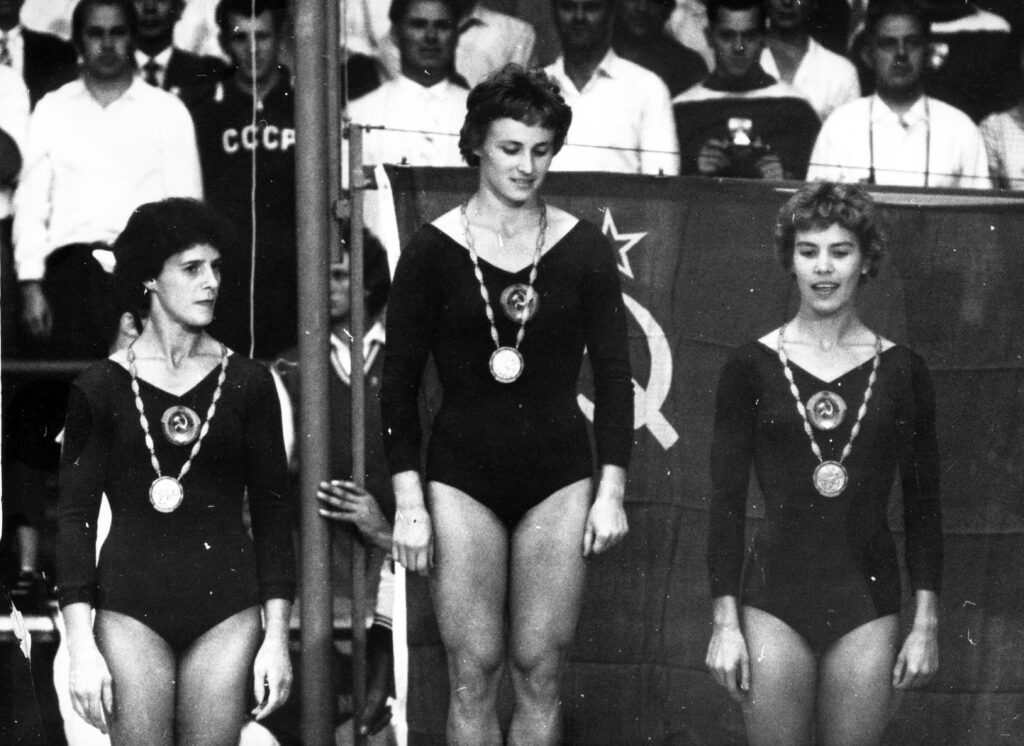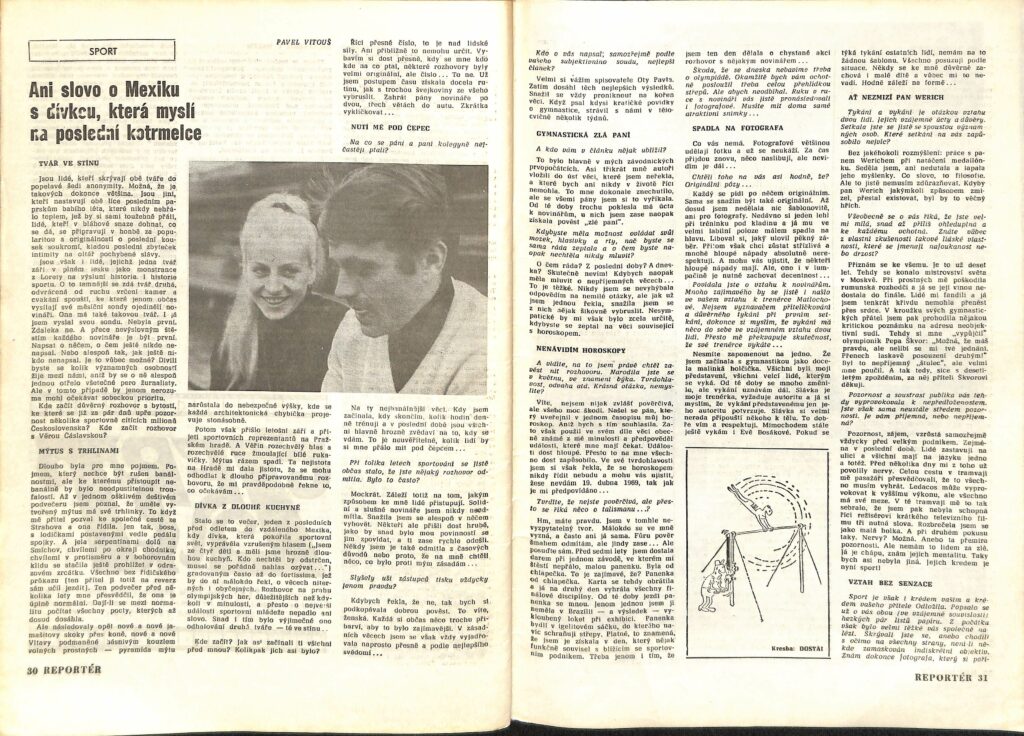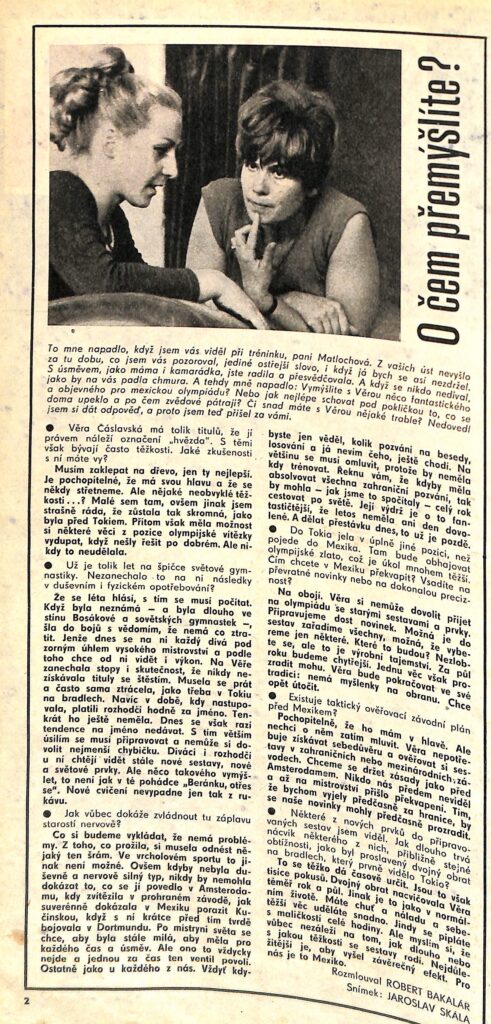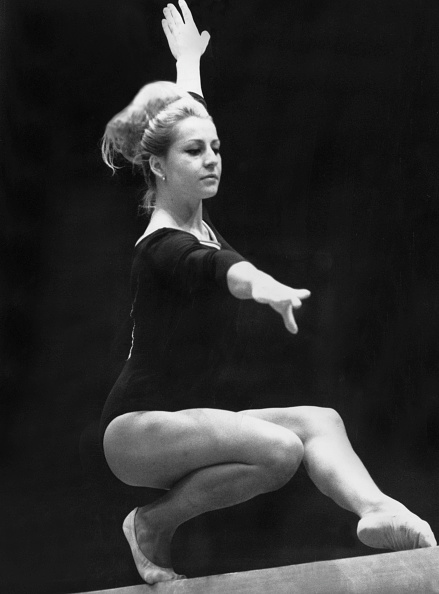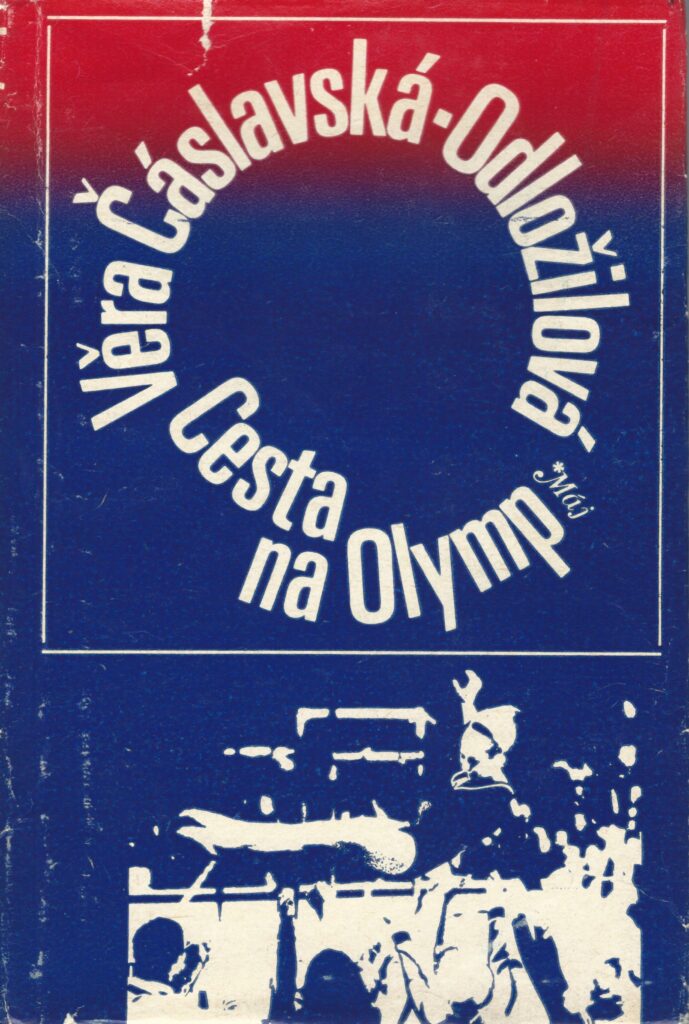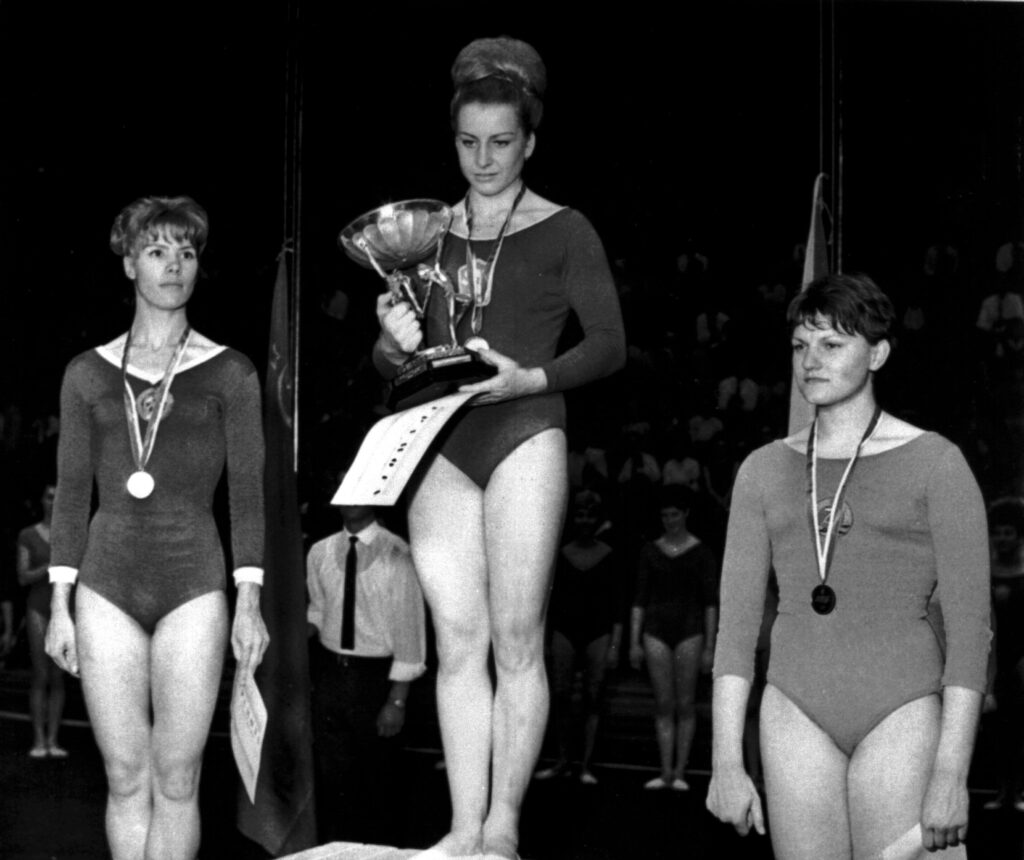No surprise: The Soviet men’s team defeated the Czechoslovak and East German teams, and Yuri Titov, the 1959 European All-Around Champion, won the all-around title
The surprise: Months before the Prague World Championships, the Czech and East German women defeated the Soviet team, and Čáslavská won the all-around.
Granted, the top Soviet gymnast, Larisa Latynina, was not present. However, Čáslavská’s victory over Astakhova was a harbinger of good things to come. After finishing behind Astakhova at the 1960 Olympics (eighth compared to third) and the 1961 European Championships (tied for third compared to second), Čáslavská finally beat Astakhova during this tri-meet. Then, at the 1962 World Championships, Čáslavská finished second, defeating all the Soviet gymnasts except for Latynina.
Here’s more about the tri-meet, as well as short interviews with several of the Soviet gymnasts. An interesting question came up: Would it be correct to give the judges the optional routines written out before the competition? Not surprisingly, all the athletes said no.

